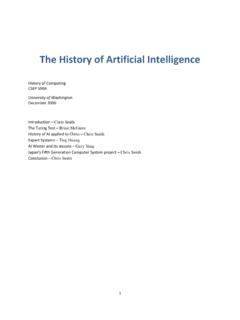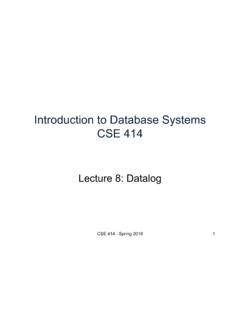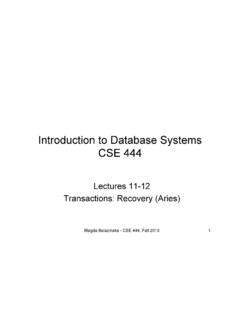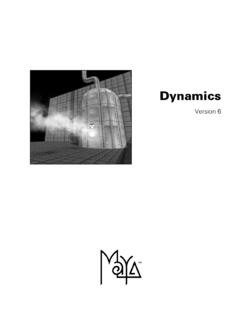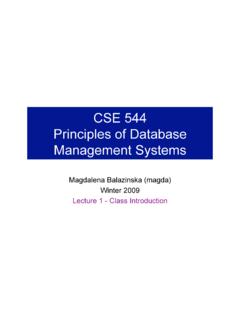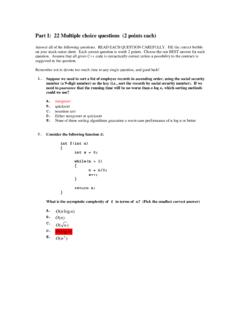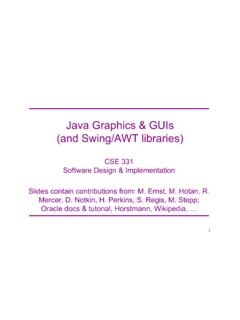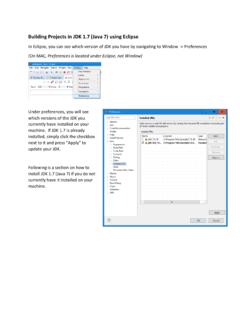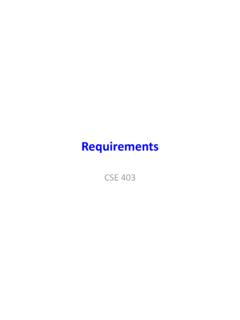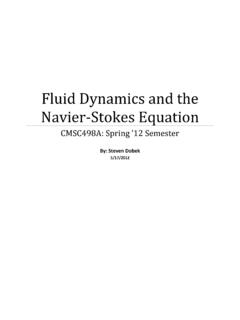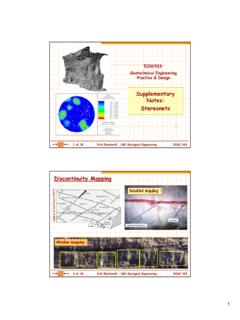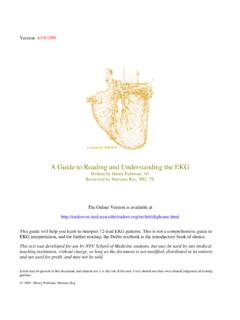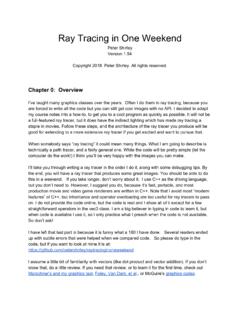Transcription of C++ Standard Template Library - University of Washington
1 CSE333, Summer 2018L14: C++ STLC++ Standard Template LibraryCSE 333 Summer 2018 Instructor:Hal PerkinsTeaching Assistants:RenshuGuWilliam KimSoumya VasishtCSE333, Summer 2018L14: C++ STLC++ s Standard LibraryvC++ s Standard Library consists of four major pieces:1)The entire C Standard library2)C++ s input/output stream Library std::cin, std::cout, stringstreams, fstreams, )C++ s Standard Template Library (STL) Containers, iterators, algorithms (sort, find, etc.), numerics4)C+ + s miscellaneous Library Strings, exceptions, memory allocation, localization2 CSE333, Summer 2018L14: C++ STLSTL Containers JvA containeris an object that stores (in memory) a collection of other objects (elements) Implemented as class templates, so hugely flexible More info in C++ Primer , different classes of container Sequencecontainers ( vector , deque, list.
2 Associativecontainers (set, map, multiset, multimap, bitset, ..) Differ in algorithmic cost and supported operations3 CSE333, Summer 2018L14: C++ STLSTL Containers LvSTL containers store by value, not by reference When you insert an object, the container makes a copy If the container needs to rearrange objects, it makes copies you sort a vector , it will make many, many copies you insert into a map, that may trigger several copies What if you don t want this (disabled copy constructor or copying is expensive)? You can insert a wrapper object with a pointer to the object We ll learn about these smart pointers soon4 CSE333, Summer 2018L14: C++ STLOur Tracer ClassvWrapper class for an unsigned intvalue_ Default ctor, cctor, dtor, op=, op<defined friendfunction operator<<defined Also holds unique unsigned intid_(increasing from 0) Private helper method PrintID()to return "(id_,value_)"as a string Class and member definitions can be found in for tracing behaviors of containers All methods print identifying messages Unique id_allows you to follow individual instances5 CSE333, Summer 2018L14.
3 C++ STLSTL vectorvA generic, dynamically resizable array Elements are store in contiguousmemory locations Elements can be accessed using pointer arithmetic if you d like to Random access is O(1) time Adding/removing from the end is cheap (amortized constant time) Inserting/deleting from the middle or start is expensive (linear time)6 CSE333, Summer 2018L14: C++ #include <iostream>#include < vector >#include " "using namespacestd;intmain(intargc, char**argv) {Tracera, b, c; vector <Tracer> vec;cout<< " " << a << endl; (a);cout<< " " << b << endl; (b);cout<< " " << c << endl; (c);cout<< "vec[0]" << endl<< vec[0] << endl;cout<< "vec[2]" << endl<< vec[2] << endl;return0;}CSE333, Summer 2018L14: C++ STLSTL iteratorvEach container class has an associated iteratorclass ( <int>::iterator) used to iterate through elements of the container Iterator rangeis from beginup to end endis one past the last container element!
4 Some container iterators support more operations than others All can be incremented (++), copied, copy-constructed Some can be dereferenced on RHS ( = *it;) Some can be dereferenced on LHS ( *it = x;) Some can be decremented (--) Some support random access ([], +, -, +=, -=, <, >operators)9 CSE333, Summer 2018L14: C++ STLiteratorExample10#include < vector >#include " "using namespace std;intmain(intargc, char**argv) {Tracera, b, c; vector <Tracer> vec; (a); (b); (c);cout<< "Iterating:" << endl; vector <Tracer>::iterator it;for(it = (); it < (); it++) {cout<< *it << endl;}cout<< "Done iterating!" << endl;return0;} , Summer 2018L14: C++ STLType Inference (C++11)vThe autokeyword can be used to infer types Simplifies your life if, for example, functions return complicated types The expression using automust contain explicit initialization for it to work// Calculate and return a vector // containing all factors of nstd:: vector <int> Factors(intn);void foo(void) {// Manually identified typestd:: vector <int> facts1 = Factors(324234);// Inferred typeautofacts2 = Factors(12321);// Compiler error hereautofacts3;}11 CSE333, Summer 2018L14: C++ STLautoand IteratorsvLife becomes much simpler!
5 12for( vector <Tracer>::iteratorit = (); it < (); it++) {cout<< *it << endl;}for(autoit = (); it < (); it++) {cout<< *it << endl;}CSE333, Summer 2018L14: C++ STLR ange forStatement (C++11)vSyntactic sugar similar to Java s foreach General format: declarationdefines loop variable expressionis an object representing a sequence Strings, initializer lists, arrays with an explicit length defined, STL containers that support iterators13// Prints out a string, one// character per linestd::stringstr("hello");for ( autoc : str) {std::cout<< c << std::endl;}for ( declaration: expression) {statements}CSE333, Summer 2018L14: C++ STLU pdated iteratorExample14#include < vector >#include " "using namespace std;intmain(intargc, char**argv) {Tracera, b, c; vector <Tracer> vec; (a); (b); (c);cout<< "Iterating:" << endl;// "auto" is a C++11 feature not available on older compilersfor(auto&p : vec) {cout<< p << endl;}cout<< "Done iterating!}
6 " << endl;return0;} , Summer 2018L14: C++ STLSTL AlgorithmsvA set of functions to be used on ranges of elements Range: any sequence that can be accessed through iteratorsor pointers, like arrays or some of the containers General form:vAlgorithms operate directly on range elementsrather than the containers they live in Make use of elements copy ctor, =, ==, !=, < Some do not modify elements , count, for_each, min_element, binary_search Some do modify elements , transform, copy, swap15algorithm(begin, end, ..);CSE333, Summer 2018L14: C++ STLA lgorithms Example16#include < vector >#include <algorithm>#include " "using namespace std;void PrintOut(constTracer& p) {cout<< " printout: " << p << endl;}intmain(intargc, char**argv) {Tracera, b, c; vector <Tracer> vec; (c); (a); (b);cout<< "sort:"<< endl;sort( (), ());cout<< "done sort!
7 " << endl;for_each( (), (), &PrintOut);return0;} , Summer 2018L14: C++ STLSTL listvA generic doubly-linked list Elements are notstored in contiguous memory locations Does not support random access ( do list[5]) Some operations are much more efficient than vectors Constant time insertion, deletion anywhere in list Can iterate forward or backwards Has a built-in sort member function Doesn t copy! Manipulates list structure instead of element values19 CSE333, Summer 2018L14: C++ STLlistExample20#include <list>#include <algorithm>#include " "using namespace std;void PrintOut(constTracer& p) {cout<< " printout: " << p << endl;}intmain(intargc, char**argv) {Tracera, b, c;list<Tracer> lst; (c); (a); (b);cout<< "sort:"<< endl; ();cout<< "done sort!" << endl;for_each( (), (), &PrintOut);return0;} , Summer 2018L14: C++ STLSTL mapvOne of C++ s associativecontainers: a key/value table, implemented as a tree General form: Keys must be unique multimapallows duplicate keys Efficient lookup (O(log n)) and insertion (O(log n)) Access valuevia name[key] Elements are type pair<key_type, value_type>and are stored in sortedorder (key is field first, value is field second) Key type must support less-than operator (<)21map<key_type, value_type> name;CSE333, Summer 2018L14: C++ STLmapExample22void PrintOut(constpair<Tracer,Tracer>& p) {cout<< "printout: [" << << ","<< << "]"<< endl;}intmain(intargc, char**argv) {Tracera, b, c, d, e, f;map<Tracer,Tracer> table;map<Tracer,Tracer>::iteratorit.
8 (pair<Tracer,Tracer>(a, b));table[c]= d;table[e] = f;cout<< "table[e]:"<< table[e] << endl;it = (c);cout<< "PrintOut(*it), where it = (c)" << endl;PrintOut(*it);cout<< "iterating:" << endl;for_each( (), (), &PrintOut);return 0;} , Summer 2018L14: C++ STLU nordered Containers (C++11)vunordered_map, unordered_set And related classes unordered_multimap, unordered_multiset Average case for key access is O(1) But range iterators can be less efficient than ordered map/set See C++ Primer, online references for details23 CSE333, Summer 2018L14: C++ STLE xtra Exercise #1vUsing the from lecture: Construct a vector of lists of Tracers vectorcontainer with each element being a listof Tracers Observe how many copies happen J Use the sort algorithm to sort the vector Use the ()function to sort each list24 CSE333, Summer 2018L14: C++ STLE xtra Exercise #2vTake one of the books from HW2 s test_treeand.
9 Read in the book, split it into words (you can use your hw2) For each word, insert the word into an STL map The key is the word, the value is an integer The value should keep track of how many times you ve seen the word, so each time you encounter the word, increment its map element Thus, build a histogram of word count Print out the histogram in order, sorted by word count Bonus: Plot the histogram on a log-log scale (use Excel, gnuplot, etc.) x-axis: log(word number), y-axis: log(word count)25

